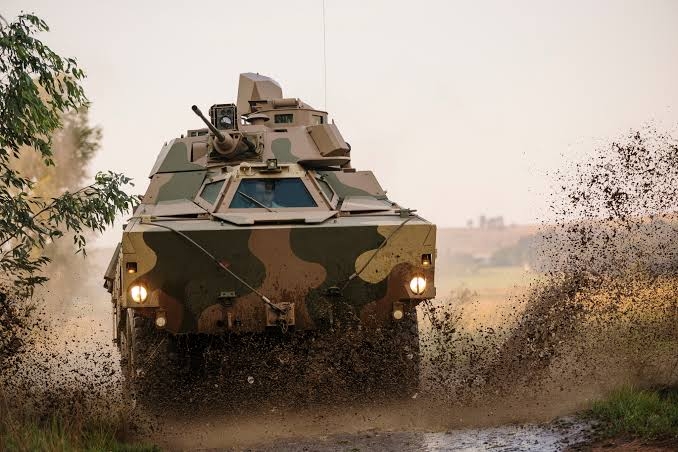The Cameroonian military’s Rapid Intervention Battalion (BIR), which provides protection to President Paul Biya, is soon to receive a batch of Ratel infantry fighting vehicles (IFVs) from South Africa.
The 10 Ratels are being supplied by the South African company OTT Technologies, which has been contracted to upgrade the vehicles to the latest standard. The upgrade includes the installation of new armor, weapons, and communications systems. OTT specializes in the refurbishment and modernization of military vehicles.
The Ratel is a well-known and respected IFV that has been in service with the South African military for over 40 years. It is armed with a 20mm cannon and a 7.62mm machine gun, and it can carry up to 10 troops.
In July, OTT Technologies, a South African company that specializes in the refurbishment and upgrading of military vehicles, announced that it is set to deliver a batch of remanufactured Ratels to an African military. The vehicles were sourced from OTT stock and have undergone a comprehensive seven-month rebuild and refurbishment process.
It appears that Cameroon is the recipient of the upgraded Ratels. The Ratels are being supplied to the BIR under a government-to-government agreement between Cameroon and South Africa.
The Ratel is a heavily armored vehicle that is armed with a 20mm cannon and a 7.62mm machine gun. It is also equipped with a smoke grenade launcher and a pintle-mounted machine gun. The vehicle can carry up to 11 passengers, including the driver, commander, and gunner.
According to OTT Technologies, the remanufactured Ratels that OTT Technologies is delivering to the African military have been upgraded with a number of new features, including a new engine, a new sighting system, and additional armor. These upgrades will make the Ratels more effective in combat and will extend their service life.
The BIR is a highly trained and equipped unit that is responsible for protecting the president and other high-ranking government officials. The unit has been involved in a number of operations against Boko Haram and other terrorist groups in the north of the country.
The deal to supply the Ratel IFVs to Cameroon was signed in 2022. The first batch of vehicles is expected to be delivered in the coming weeks.
The acquisition of the Ratel IFVs is a significant boost to the BIR’s capabilities. The vehicles will provide the unit with much-needed firepower and protection in the fight against terrorism.
Although, the BIR unit are already familia with the Ratel IFV, since they first acquired the type in 2015. In December 2015, the BIR received twelve Ratel 20s with its Light Intervention Units deployed to the Far North province, where the force is leading operations against Boko Haram militants.
The Ratel 20 is armed with a French GIAT 20-mm cannon in a two-man turret, plus three 7.62-mm machine guns, one coaxial one over the turret and one on a pintle mounting over a hatch in the rear hull roof. The 20-mm cannon has an effective range of 1 500 m and can engage light armoured vehicles.
The recent acquisition is also part of a broader effort by Cameroon to modernize its military. The vehicles will be used to protect President Biya and other senior government officials, and they will also be used to conduct operations against armed groups in the north and east of Cameroon.
The modernization of the Cameroonian military is a response to the growing threat of terrorism in the region. Cameroon is located in the Lake Chad basin, which is a hotbed of terrorist activity. Boko Haram, the Islamic State West Africa Province (ISWAP), and other groups have carried out numerous attacks in the region in recent years.
The acquisition of the Ratel IFVs is a significant step in Cameroon’s efforts to counter terrorism. The vehicles will provide the BIR with the firepower and protection it needs to defeat these groups.
Last year October, Jihadist group affiliated with Jama’at Ahlis Sunna Lidda’awati-Jihad (Boko Haram) terror group sacked Cameroonian soldiers from a forward operating base (FOB) in Djibrilli, near the Nigerian border.
The attack once again raises questions about Cameroon’s military capacity to effectively manage the insecurity amid cuts to military spending, in addition to sending more of its troops to the conflict in the country’s Anglophone regions.
On one hand, the Cameroonian Army infantry already lacks sufficient armoured vehicles, which is preventing them from carrying out long-range patrols. Also, racketeering, corruption, and human rights violations are making them lose the populace’s support. These factors help Boko Haram gain more ground.





